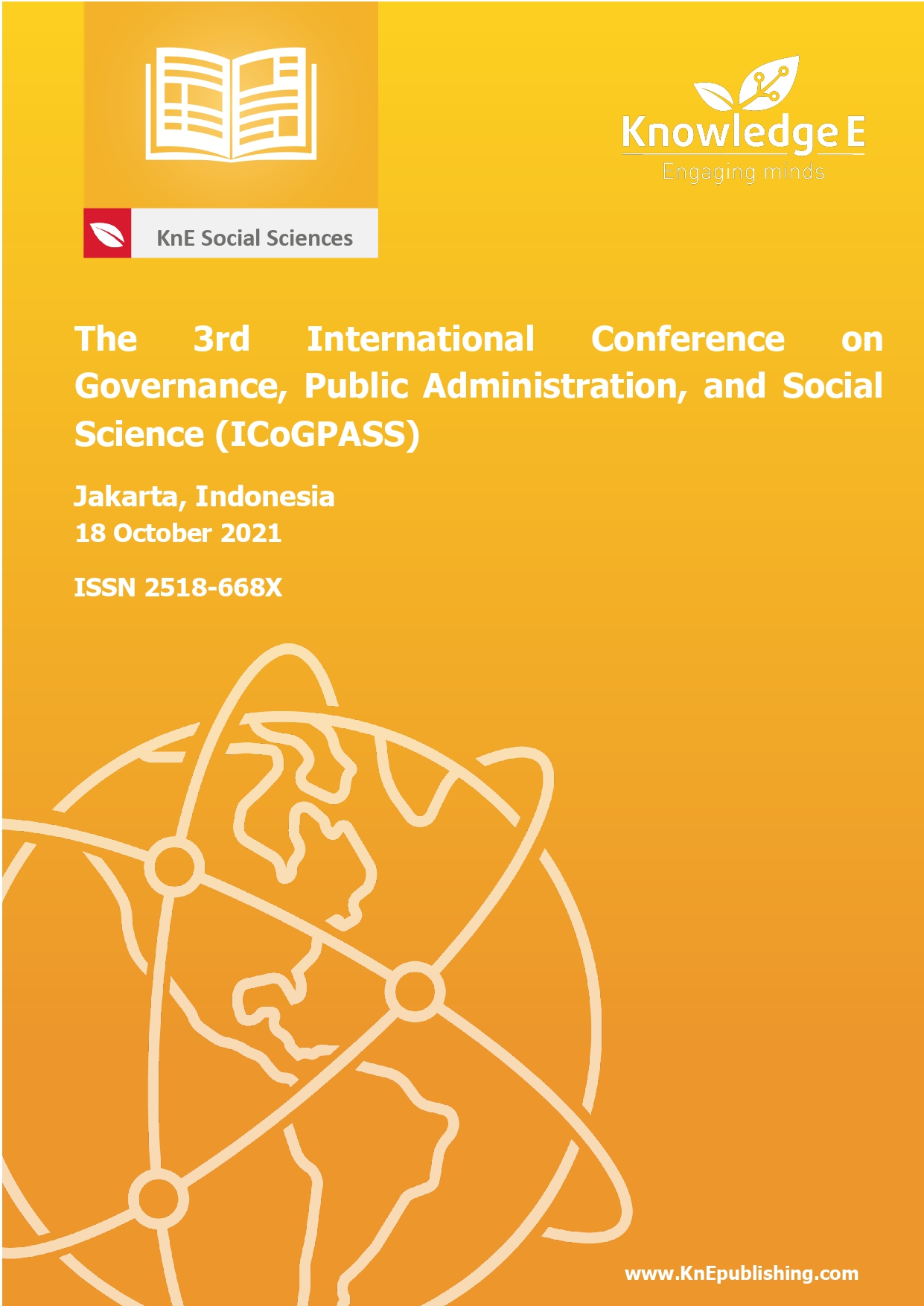Public Manager Leadership Model Compatible with Millennials
DOI:
https://doi.org/10.18502/kss.v7i9.11024Abstract
Millennials are increasingly more prominent in government bureaucracy. Recent public service recruitment has led to an increase of 24% in the number of Generation Y employees in the public service force. These new generations are exposed to a bureaucratic culture that is peculiar to their own character which favors flexibility in terms of working time and venue, as well as being technologically savvy. On the contrary, public service leaders are generally from Generation X and have a leadership style which is at odds with the millennial work culture, resulting in a generation gap. This study, therefore, attempted to explore a leadership model which is compatible with millennials. The study employed a qualitative descriptive approach. Data were collected using participant observation and interviews with informants representing millennials. The study proposed four aspects that millennials require from a leader. First, millennials prefer their superiors as coaches who support them in finding solutions to their problems rather than as managers. Second, millennials prefer collaborating in carrying out their tasks. Third, they expect their superiors to be fair and objective in assessing their performance. Lastly, millennials need their supervisors to motivate them.
Keywords: leadership model, millennial generation, digitalization and automation
References
Weller C. 26-year-old ‘echo boomers’ are running wild in America — Here’s what they’re all about. Singapore Business Insider. 2017 Aug.
Juwari A. Generasi milenial masuk birokrasi. 2018. Available from: Detik.com
Brack J. Maximizing millennials in the workplace. Voced.edu; 2012. Available from: http://hdl.voced.edu.au/10707/405117
Afriansyah J. Kepemimpinan di era millenial. 2019.
Grzybowska A, K, Lupicka. Key competencies for Industry 4.0. Economics & Management Innovations. 2017. https://doi.org/10.26480/icemi.01.2017.250.253
Smith S, Garriety J. The art of flexibility: Bridging five generations in the workforce. 2020;19(3):107–110. https://doi.org/10.1108/SHR-01-2020-0005
Riggs FW. Administrasi negara-negara berkembang teori masyarakat prismatis, Cet.2. Jakarta: Rajawali; 1988.
Martadisastra U. Perbandingan administrasi negara ASEAN, Cetakan 1. Bandung: Remadja Karya CV; 1987.
Rivai A. Kepemimpinan dalam masyarakat modern. Jakarta: PT. Rineka Cipta.
Moeljono D. Beyond leadership 12 konsep kepemimpinan. Jakarta: PT. Alex Media Komputindo; 2008.
Morton K. Exploring bank managers’ strategies for developing millennials for leadership roles in commercial banks. 2016.
Pritchard R, Katrina, Whiting. Baby boomers and the lost generation: On the discursive construction of generations at work. SAGE Journals. 2014;35(11):1605– 1626. https://doi.org/10.1177/0170840614550732
Turnbull S, Sharon, Williams. Responsible leadership. 2016.
Zopiatis A M-K. Y-ers, X-ers and boomers: Investigating the multigenerational (mis)perceptions in the hospitality workplace. Tour. Hosp. Res. 2012;12(2):101–121. https://doi.org/10.1177/1467358412466668
Ertas N. Turnover intentions and work motivations of millennial employees in federal service. SAGE Journals. 2015. https://doi.org/10.1177/0091026015588193
Naim UMF, Lenka. Development and retention of Generation Y employees: A conceptual framework. Empl. Relations. 2018;40(2):433–455. doi:https://doi.org/10.1108/ER-09-2016-0172.
Hartman JL. Optimizing millennials’ communication styles. SAGE Journals. 2011:22– 44. https://doi.org/10.1177/1080569910395564
Willyerd K. Millennials want to be coached at work. Harvard Business Review. 2015.
Simpson A. Open to collaboration: Why Gen Y has new expectations of work. Meta.
Wolor CW. The effect of work stress, compensation and motivation on the performance of sales people. Int. J. Innov. Creat. Chang. 2019:252–269.
Putriastuti B. How to lead the millennials: A review of 5 major leadership theory groups. J. Leadersh. Organ. 2019;1(2):96–111. https://doi.org/10.22146/jlo.46562
Amalia C, Hadi RS. Pengaruh work design characteristics, career growth, dan psychological capital terhadap work engagement karyawan generasi milenial di PT XYZ. J. Psikol. UIN Sultan Syarif Kasim Riau. 2019;15(1). http://dx.doi.org/10.24014/jp.v15i1.7029
Schwartz C et al. Keeping up with changing times in education: Fostering lifelong learning of millennial learners. Focus (Madison). 2018;16(1):74–79. https://doi.org//10.1176/appi.focus.20170004
Sutrisno E. Manajemen sumber daya manusia, Cet. 8. Jakarta: Fajar Interpratama Offset; 2010.
Alderfer CP. Existence, relatedness, and growth: Human needs in organizational settings. Free Press; 2008.
Ryan RM. Intrinsic and extrinsic motivations: Classic definitions and new directions. Contemp. Educ. Psychol. 2000;25(1):54–67. https://doi.org/10.1006/ceps.1999.1020
Miles MA. Qualitative data analysis: A method sourcebook. Sage Publication; 2014.

